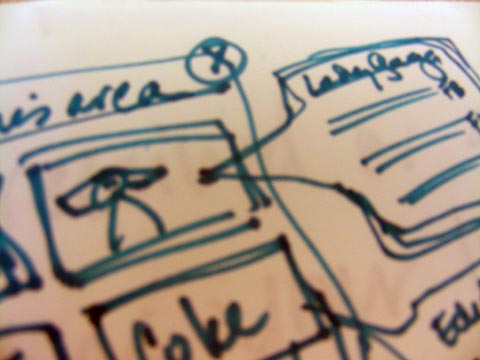August 2010
It can be difficult to incorporate new methods into your projects, particularly for two reasons: your confidence and your stakeholders’ confidence. But the solutions are the same: arm yourself with as much knowledge as possible before beginning to plan.
1. Imagine what you’ll learn. Don’t be afraid to share it with others. It can seem wrong to guess at what user’s will say, especially if you believe that surprise is the mother of innovation. But stakeholders need to understand why you are doing what you are doing. It’s unlikely they’ll support you if you can’t paint a picture of the results for them.
“I’ve chosen to conduct research in Indonesia because studies show that they are very mobile-phone centric. So I think we may learn a lot about how other countries could begin using mobile phones in the future.”
“I’m planning to interview ‘extreme’ examples of our users. For example, an interview with a CEO may teach us a lot about how all business people use their communication tools. Maybe they have ways of organizing information that everyone could use…”
After you’ve conducted the research you’ll have real stories that trump the guesses, so the guesses won’t matter. They are just tools to get buy-in and help gather support for trying new methods. But they will have helped YOU think through what you are hoping to gain from the method.
After working for several years at a design and innovation firm, I’d grown to rely on Designers for creative problem solving… sort of thinking of myself as the person who leads the framing of the interesting, relevant questions and Designers as the ones who lead the elegant solution-finding. But in my new position I’ve been without Designers on my team. But because I position myself as a Design Researcher, I wanted to deliver insights that had solutions, at least the beginning of solutions, attached to them.
That’s when I realized that this was a chance to rely on the kindness of teammates. And they’d probably enjoy it along the way. I turned each of my findings presentations into brainstorming sessions– presenting compelling user stories alongside opportunity areas. I asked questions like “Imagine that 10 years from now we are wildly successful as _______. What would that experience be like?” And asked engineers, product and marketing managers to grab a sharpie and some half-sheets of paper and tell me what I didn’t already know.
It has been a great way to understand what my brilliant teammates know about the opportunity areas– and they have diverse perspectives. It’s also been a great way to learn what is most surprising and inspiring to the teams. Some insights they nod their heads, sometimes they even say, “we’re already working on that.” But other insights spark great conversations, light bulbs pop up around the room. Those are the topics I dig deeper into.
The best part is that I did this before delivering my final report. So now, as I craft that massive presentation, I know what my stakeholders care about. I know more about it than I did before. And I have funny little sketches to illustrate many of the important points.

